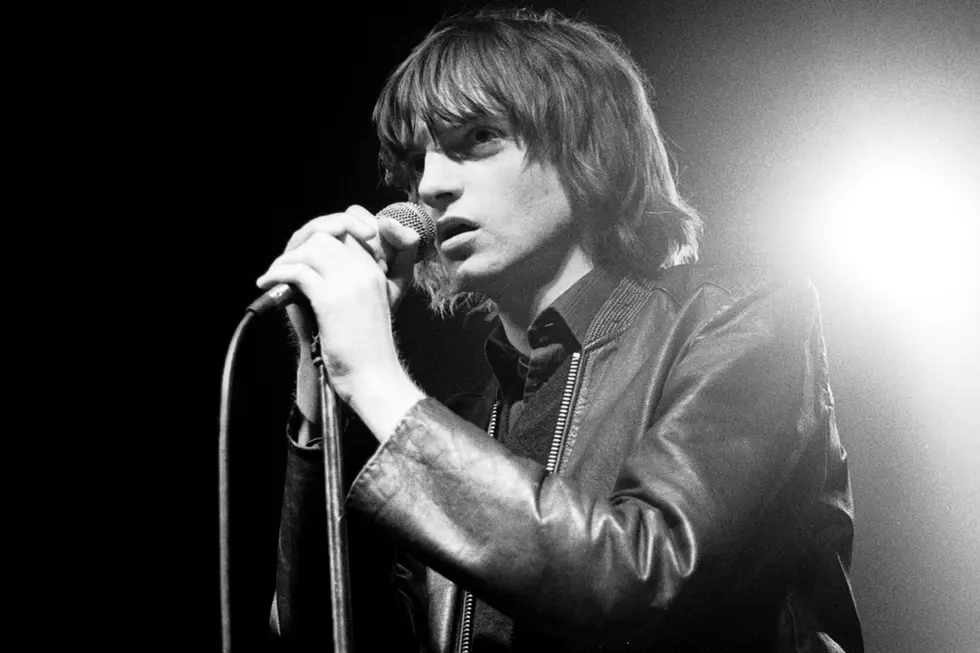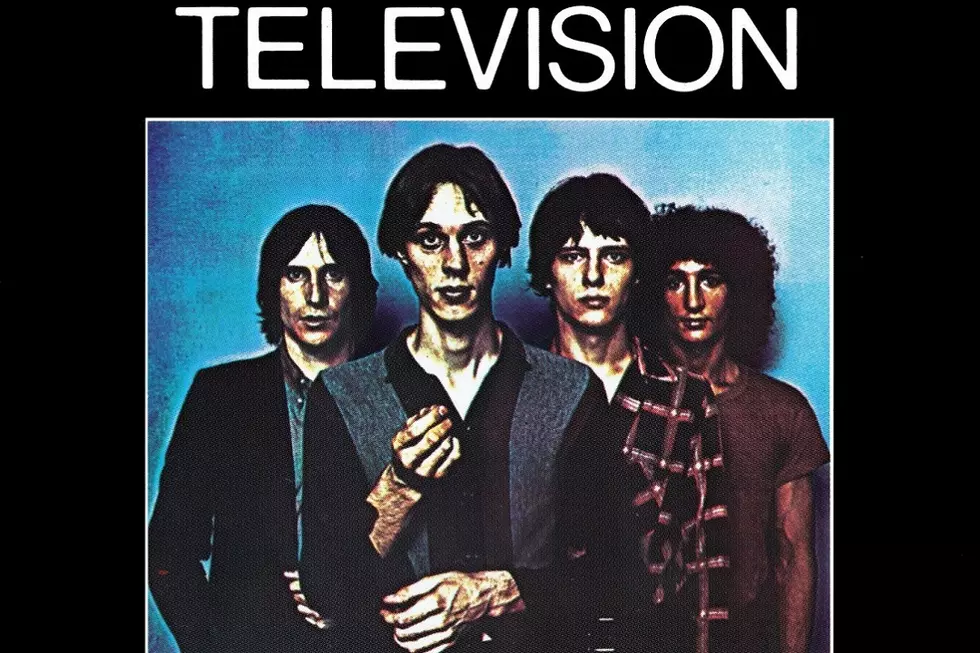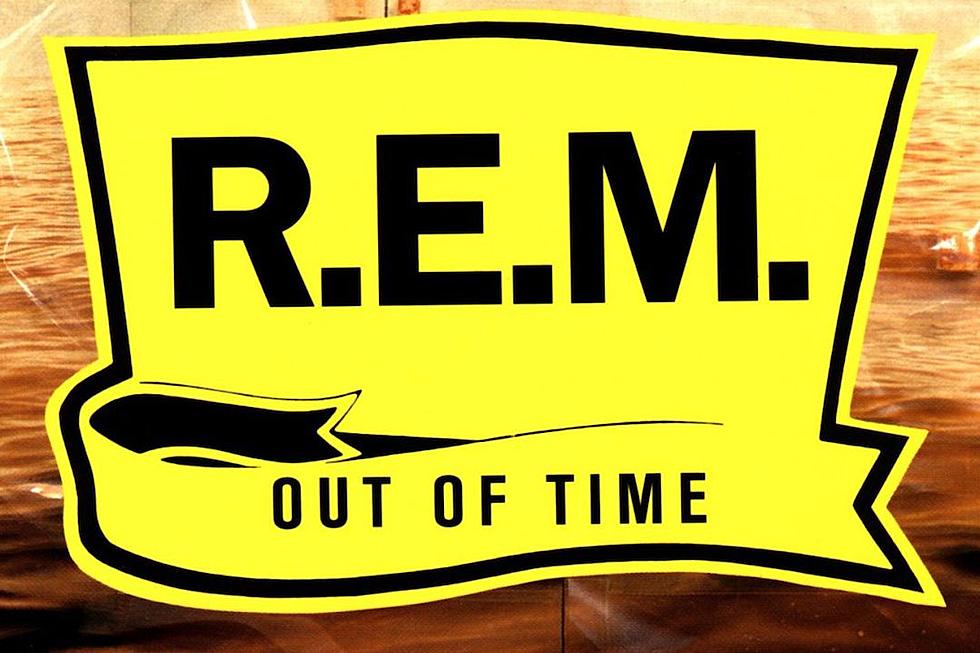35 Years Ago: The Fall Finds Inspiration in Iceland on ‘Hex Enduction Hour’
Mark E Smith thought the end was near for the Fall. After being galvanized by the Sex Pistols’ famous Manchester show, then leading the Fall through a number of influential (though unpopular) post-punk releases, Smith thought the band was in its waning days in 1981.
He warred with the band’s label, Rough Trade, and complained in the press about the state of music: synthesizers and new romanticism, Spandau Ballet and Elvis Costello. He didn’t see where the aggressively raucous and experimental Mancunian band could fit in. But, before ditching music entirely, Smith set to make one more Fall LP.
“I went into it thinking that it was the last thing we’d ever do,” Smith told the Quietus years later. “I thought it was my last LP. Because we were getting nowhere. You’ve got to put it in the period it was in, you know new romantics, indie, gloomy music. So I thought, ‘This is our last chance to put a proper LP out.'”
Going into recording, there were some indications of a brighter future. For one, the Fall ditched Rough Trade for the smaller, metal label Kamera, which Smith claimed gave the band more creative freedom. Additional support came via the group’s first U.S. tour (“They were more open to us there. It was very encouraging.”) as well as a run of gigs in Iceland. The Fall frontman found himself inspired by the alien terrain of the country, the curiosity of the audience and the entire experience.
“Iceland was a closed country not like it is now. They didn’t have rock bands and beer was illegal and stuff like that,” Smith recalled. “So we did a show there and it was a big deal for them. It was ridiculous; a quarter of the population of Reykjavik turned out to see us. Women, children, the lot. They’d never seen a group like us before. So, me being me, I said ‘Let’s record something here.'”
The then-seven-member group (with two drummers in Karl Burns and Paul Hanley) did a day of recording at Reykjavik’s Hljóðriti studio, a cave formed by lava flows. Normally used to record poems, the Fall turned it into a temporary rock studio, getting three songs on tape: the non-album single “Look, Know,” the appropriately named “Iceland” and “Hip Priest,” a song that would become a centerpiece of the new album.
With a playful attitude towards the band’s fame (or lack thereof), ghostly falsetto, bursts of guitar noise and a twisted dub bass groove, “Hip Priest” still sounds dangerously ahead of its time decades later. It was a song Smith had been working on for a while, and took the unique opportunity to record the nearly eight-minute track in an Icelandic cave. It infamously appeared about 10 years later in The Silence of the Lambs.
See "Hip Priest" Used in 'The Silence of the Lambs'
“The dynamics and emphasis go up and down in conjunction with the lyric,” drummer Hanley told Louder Than War. “It’s odd because the Fall were a big ‘riff’ band, and a lot of our songs at that time tended to be either structured, where the song sections provided the contrasts, or built round recurrent riffs that rise and, err, fall, but ‘Hip Priest’ is neither really, the music is really quite subtle.”
When the Fall returned to England, the band recorded the remainder of the album in a movie theater that was going unused (Hitchin’s Regal Cinema). Although the venue couldn’t match the sound of what they had done in Iceland, its big open space allowed co-producers Richard Mazda and Grant Showbiz to capture the group’s lo-fi, aggressive live sound. According to Hanley, the Fall even set up on stage like they were playing a concert to record what would become Hex Enduction Hour.
Smith coined the title, inventing a word in the process, and hoping it would scare potential listeners and give the indication of witchcraft. He attempted to do the same with his lyrical diatribes on the album, whether ruminating on “Who Makes the Nazis?”, mocking the music press (“Mere Pseud Mag. Ed.”) or howling “Where are the obligatory n-----s? / Hey there f---face!” on the opener “The Classical.” Everything -- from the “Sister Ray”-meets-Captain Beefheart music to the scribbled album cover -- was designed as provocation.
It worked. The U.K. wing of Motown, initially interested in signing the Fall, backed away after hearing the lyrics to “The Classical.” HMV stores refused to stock Hex Enduction Hour with its front cover showing, because of how sloppy the mess of graffiti-like scrawl looked.
Indeed, Smith was getting his blaze of glory. The only surprise was that the album become something of a hit. Hex Enduction Hour was the first Fall LP to chart in the U.K., hitting No. 71 on the British charts, after the album’s release on March 8, 1982. Smith was shocked, and became only too determined to continue. Decades down the line, the band is still going, although the frontman remains the only consistent member.
Although Smith has been dismissive about past members of the Fall and doesn’t enjoy looking back on the band’s history, he’s offered kind words about Hex Enduction Hour, even praising the CD re-release of the album in the ’00s.
“The reissue is very good I think,” he said in 2010. “What’s good about the Sanctuary reissue is you can actually hear it on CD. When it came out is was on really duff heavy metal vinyl, the sort of stuff you’d use for [Black] Sabbath’s greatest or whatever. It must have sounded really weird in those days.”
15 Artists Who Never Won a Grammy
More From Diffuser.fm









